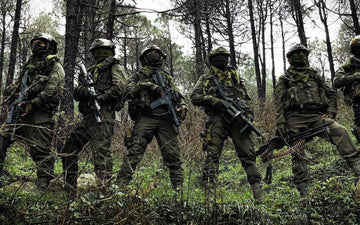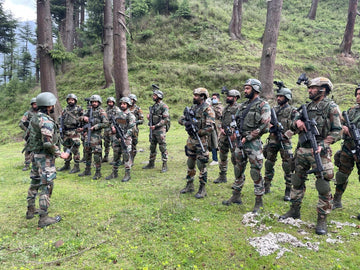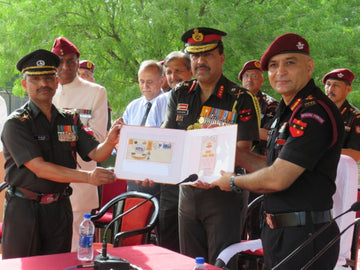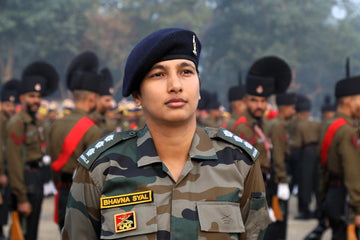In the Indian Army, the role of a Major carries significant weight and responsibility. Positioned just above the rank of Captain, Majors are the backbone of the Army's operational, administrative, and leadership structures. They play a crucial role not just in leading their units but also in shaping the future of the Indian Army through their mentorship of the younger soldiers and officers. Understanding the power and duties of an Indian Army Major is essential, not only for those aspiring to enter military service but also for the general public to appreciate the complexities involved in military leadership.
Historical Context
The rank of Major in the Indian Army has a storied history, tracing back to the British colonial period when the army was organized along conventional military lines. Over the years, the role of a Major has evolved significantly, especially after India's independence in 1947. The restructuring of the military focused on enhancing operational efficacy and aligning with the modern demands of warfare, thereby increasing the scope of responsibilities for Majors.
Leadership and Command
At the core of a Major's duties is leadership, particularly in commanding a company. Typically, a company consists of around 100 to 150 soldiers. This leadership role is not merely a title but a significant responsibility that includes ensuring that troops are not only operationally ready but also fully trained and motivated.
Responsibilities of Command:- Operational Readiness: A Major must guarantee that every soldier under their command is trained for combat and various operational contingencies.
- Tactical Decision-Making: Majors collaborate with higher authorities to establish strategies and tactics that match the operational requirements.
- Resource Management: Efficiently utilizing available resources, including personnel and equipment, is a critical skill for Majors.
A Major's ability to command directly affects the morale and effectiveness of the unit, subsequently impacting broader military objectives during operations.
Operational Responsibilities
A Major plays a key role in the planning and execution of military operations. Their involvement highlights the importance of strategic thinking and planning in military success.
Key Duties in Operations:- Mission Planning: Majors are frequently tasked with developing mission plans and operational strategies tailored to specific objectives.
- Coordination with Higher Officers: Collaboration with senior officers ensures that operational directives are clearly understood and followed.
- Execution: During operations, the Major leads their company, making real-time tactical decisions that can alter the course of events.
These responsibilities require a solid understanding of military doctrines and operational tactics.
Welfare and Morale
Apart from commanding their troops, Majors have a pivotal role in ensuring the welfare and morale of the soldiers. Maintaining high morale is crucial in a military setting, where stress and high-pressure situations can affect performance.
Welfare Initiatives:- Mental Health Support: Addressing concerns related to stress, anxiety, or personal issues can lead to lower attrition rates and higher job satisfaction among soldiers.
- Building Trust: A Major must cultivate an atmosphere of trust where soldiers feel safe to communicate their difficulties.
- Team Building Activities: Organizing training exercises that promote camaraderie can enhance morale and encourage a sense of belonging.
Administrative Duties
Majors are not just leaders in the field; they also juggle various administrative responsibilities that are crucial for the seamless functioning of military operations.
Administrative Tasks Include:- Logistics Coordination: Ensuring that all necessary supplies and equipment are available and operational is a Major's responsibility.
- Maintaining Records: Keeping track of training, deployments, and other metrics is essential for accountability and future planning.
- Reporting to Superiors: Effective communication with higher-ranking officers is crucial for operational success.
These behind-the-scenes responsibilities are what enable a Major to lead effectively during missions.
Mentorship and Role Modeling
In addition to leading troops, a Major serves as a mentor and role model. This aspect of their duty goes beyond mere instruction; it involves nurturing the next generation of leaders within the Army.
Mentorship Roles:- Professional Development: Providing guidance on career progression and skills development.
- Inspiration and Motivation: Sharing experiences and challenges faced during their service to inspire subordinates.
- Fostering Leadership: Cultivating leadership qualities in junior officers and soldiers is essential for the army’s future.
When Majors invest time in the growth of their troops, it creates a more competent and resilient force.
Decision-Making and Adaptability
One of the defining traits of an effective Major is the ability to make sound decisions under pressure. The rapidly changing landscape of modern warfare requires adaptability and quick thinking.
Effective Decision-Making Includes:- Risk Assessment: Evaluating potential risks and benefits related to tactical choices.
- Situational Awareness: Maintaining a clear understanding of the battlefield and operational environment is vital for swift decision-making.
- Feedback Mechanisms: Engaging in after-action reviews and using feedback to refine decisions for future operations.
The decisions made by a Major can have profound implications on the success or failure of missions, emphasizing the need for strong analytical and leadership skills.
Operational Readiness
Ensuring operational readiness is one of the quintessential duties of a Major. This encompasses everything from troop training to equipment maintenance.
Key Aspects of Operational Readiness:- Training Programs: Developing rigorous training schedules to prepare soldiers for various scenarios.
- Equipment Checks: Regularly conducting checks on weapons, vehicles, and other equipment to ensure they are functional.
- Emergency Preparedness: Ready troops to respond rapidly to unforeseen contingencies, ensuring that they can operate cohesively.
A Major's focus on readiness shapes how well the unit performs in critical situations.
Collaboration with Superiors
The relationship between a Major and their superiors is crucial for the effective execution of military strategies.
Collaborative Processes:- Strategic Planning: Working closely with Colonel and Brigadier ranks to align unit objectives with larger military goals.
- Resource Allocation: Effectively communicating needs for more personnel or equipment to higher-ups.
- Feedback Loop: Ensuring that information from the ground level is passed up to inform strategic decisions, creating a two-way communication channel.
Being able to facilitate this collaboration effectively can ultimately lead to better outcomes in military operations.
Case Studies or Real-world Applications
To delve deeper into the duties of an Indian Army Major, let's examine some real-world applications of their roles.
The Kargil Conflict (1999): During the Kargil War, Majors played a pivotal role in reclaiming territory from intruders. They were responsible for executing the plans drawn by their superiors while also adapting those plans in real-time based on battlefield conditions. The operational readiness and morale maintained by Majors proved vital in the success of military operations during intense fighting. Peacekeeping Missions: In UN peacekeeping missions, Indian Army Majors have led multinational forces, demonstrating both their command skills and the ability to navigate complex political environments. These missions require a fine balance of military strategy and diplomacy, showcasing the comprehensive skill set of Indian Army Majors.Statistical Data and Research Insights
Supporting the discussion of the roles and responsibilities of Indian Army Majors is the application of statistical data from various military studies:
- Combat Efficiency: Research indicates that units led by competent officers, including Majors, achieve 30% higher operational success rates.
- Morale Statistics: Studies demonstrate that maintaining high troop morale can reduce turnover rates by up to 25%, underscoring the importance of the Major’s role in welfare.
These statistics highlight the tangible impact that effective Majors can have on military operations.
Challenges and Solutions
While the role of a Major is critical, it does come with its challenges.
Key Challenges Include:- High-pressure Environment: The demands of leadership in a combat environment can lead to stress and burnout.
- Resource Constraints: Often, Majors must work with limited resources, impacting operational capabilities.
- Balancing Duties: Handling both leadership and administrative responsibilities can be overwhelming.
- Stress Management Programs: Implementing programs focused on mental health can help mitigate stress.
- Resource Allocation: Advocating for better support systems from higher command can alleviate operational strains.
- Time Management Training: Equipping Majors with skills to prioritize tasks efficiently can enhance productivity.
Future Trends and Predictions
As warfare evolves with technological advancements, the role of an Indian Army Major will likely continue to change.
Emerging Trends:- Increased Technology Integration: The use of drones and cyber warfare will require Majors to adapt rapidly.
- Focus on Asymmetric Warfare: As the nature of conflicts becomes more complex, training will increasingly focus on non-conventional strategies and tactics.
- Collaborative Leadership: A shift towards more collaborative leadership styles, where Majors work closely with soldiers in decision-making processes, is anticipated.
These evolving dynamics underscore the importance of continuous learning and adaptation for Majors in the Indian Army.
Conclusion
The role of a Major in the Indian Army is multifaceted, encompassing leadership, operational duties, administrative tasks, and the well-being of soldiers. Their responsibilities shape not only the success of their units but also contribute to the strategic readiness of the Indian Army as a whole. As technology and warfare evolve, so too will the challenges and competencies required of Majors.
To those aspiring to serve in such a pivotal role, understanding the depth and breadth of these responsibilities is crucial. The insights drawn from the duties of Majors highlight the importance of strong leadership, adaptability, and the unwavering commitment to the welfare of soldiers while executing military objectives. Whether you are following a career in the military or simply looking to understand its inner workings, recognizing the impact of a Major's role can provide valuable perspectives on the complexities of modern-day military operations.





